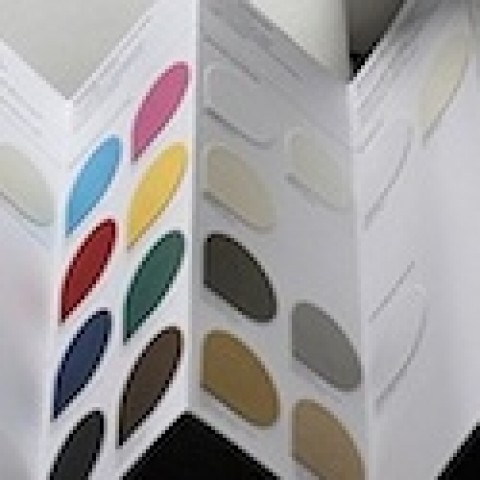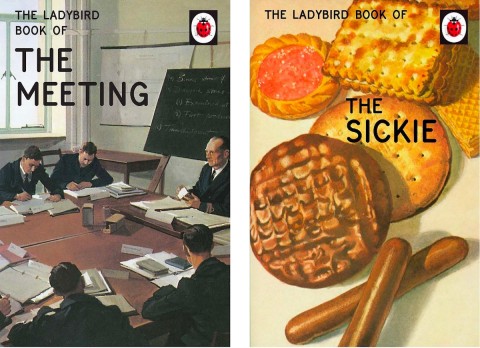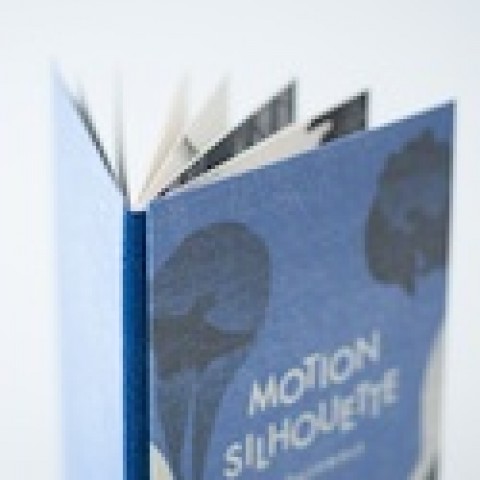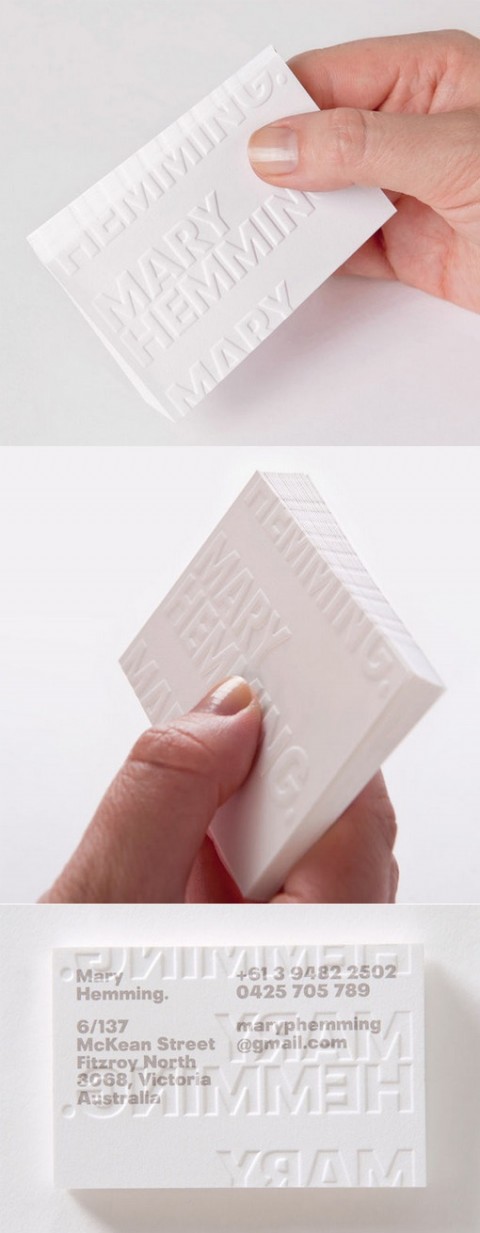If you missed the “HABIT” webinar, please set aside some time to listen to the recording. We’re sure you’ll find it as valuable as this attendee:

Stefan Mumaw led us on this truly satisfying and inspirational webinar. His responses to the many great questions he received are below.
Do you always change your design style with each new project?
No, but I always investigate which style I should employ based on the needs of the project rather than simply falling back on old standbys. This has been a hard habit to break, and I don’t think I’ve fully broken it, but my goal with each project is to make design choices based on project needs not poor time management or apathy. Sometimes, that means design styles are the same as previous projects and sometimes that means new directions.
I always want to use new folds, new fonts, and always new and interesting papers (textures, colors, weights). My clients choose to keep it simple, usually budget driven. Decorative headline fonts can blow their minds, and while they like my past portfolio of unusual papers, the clients now go with basic, affordable white.
There’s two parts to a project: the process and the result. You control the process; they control the result. You can only work on your part, find joy in your process and improve the quality and quantity of your ideas. What the client chooses is on them, but if you find joy in the process, the result means less creatively. Painters paint, writers write, creatives create.
How do you make your client change THEIR habits?
You can’t. You can educate and explore and insight, but ultimately their habits are theirs. You can only control what is yours to own. Some of the above question touches on this.
How do you deal with clients that don’t want an original design?
See the above two responses. The result and the process are two different things. Creatively, we can only control and improve the process. As professionals, we ultimately work for someone else. It’s why we’re not fine artists.
Is there a great resource site you could recommend to learn more about “ideation”?
Nothing singular online comes to mind, but there are a couple of books that hit the topic in macro and micro ways. I’d definitely recommend “Made to Stick” by Dan and Chip Heath as well as “Ideaspotting” by Sam Harrison. My new book will hit in March of next year. It’s entitled “Chasing the Monster Idea” and will focus on ideation in the form of learning to generate monster ideas.
As a solo designer, do you have any advice on connecting with others to boost creativity (This seminar is an excellent way!)?
Don’t be focused on only looking for other creatives. Be creative in who you connect with. Say, for instance, you’re working on a poster project, you may choose to brainstorm with an illustrator and a designer, but then also bring in an architect (“How does that poster work with the surroundings it will be in?”) or a musician (“What other senses can we use with that to communicate better?”)
As far as general creative training, you simply have to find other willing participants from any walk of life. You’ll be surprised at the outcome when people who rarely get to express their creative side get the opportunity. You can also do this digitally through forums or blogs. The HOW Forum has a forum dedicated to creative pursuits, so I’d start there.
I am a young designer and get a lot of my ideas from other’s work. I don’t copy, but my first step with a new project is to see what other people have done. What do you think about that?
I think it’s a natural progression to get inspiration from others into forming your own. This is a typical progress. I see this with young designers often. The key is to understand that this is a progression. As you get more confident in your own abilities, you’ll begin to find inspiration from other sources.
For instance, if you’re working on a brochure design, it’s perfectly natural to go find other brochure designs and find inspiration from that. But over time, you’ll begin to find inspiration from other mediums, maybe finding it from a poster design or a self promotion, then you’ll transition to more conceptual forms of inspiration, like finding something useful for your brochure project from a movie intro or architecture. The best designers typically find inspiration from all over, from their desk to the street. You’ll get there. We all do.
How do you deal with frustration as an obstacle to creativity?
Frustration is an internal emotion. As crappy as it is to say, we control frustration. Like boredom, we can choose to not be frustrated. It’s incredibly difficult, but possible. What’s key to remember about frustration is we’re typically not frustrated with the creative process; it’s things we can’t control that frustrate us. It’s relationships and lack of support or failure to see things the way we do. We can’t control those; we have to find joy in our process, in our progress as creatives. When we get too focused on the result of our creativity and not the creativity itself, we can often find frustration. Choose to focus on what we can control and what we can improve: ourselves. It’s all we can do.
Working for a state university, paper choices can be dictated a bit by cost so I am limited in use of textured papers. House stocks over the last year have become more the norm for us because we are trying to get more bang for our buck.
Cost is a limitation we have to work within, it’s part of “restriction,” but it can also be part of solution. There are limitations in every part of our process. The question becomes what can we do within those restrictions? If we can’t choose the paper we want, what paper can we choose? Do we naturally assume house stocks are all we have to choose from or are there choices we haven’t explored because our routine has become too assumptive? What printing techniques can we employ that improves communication and brings out the most in the quality of those stocks? There’re lots of ways we can explore within the confines of budget if we’re willing to fail a lot in order to succeed.
Can you give some input on how to beat boredom? I have good habits and continuous flow of work, but sometimes the boredom kicks in, and there is no way of relieving myself from it. Thanks.
Challenge. You have to find a way to respond to a challenge. It’s the quickest and most tried way to punch boredom in the neck. Some people are good at self-challenging, they can set goals or obstacles with the idea of overcoming them, but most of us lack that level of self discipline, so we need a catalyst.
In the same way we find accountability in other people to keep us on track with our diet or exercise or desire to quit smoking or any other habit we wish to initiate or kick, we have to find others who will challenge us creatively. If we can challenge ourselves, maybe we set certain limitations within a project that we need to overcome, like choosing to take all our own photography or maybe it’s that we’re going to do all the typography by hand. If you enlist others, ask them to find ways to challenge you creatively outside of a project, like setting up weekly meet-ups and assigning creative exercises to the group that you can solve between now and the next meet-up. Don’t be afraid to treat creativity like any other habit you wish to obtain or grow.
How do you convince your conservative clients to step outside the box?
You have to show them what they get when they do. If you have a conservative client, it often helps to show them examples of risks taken that have yielded great reward. Most conservative clients simply lack vision (or have vision, but are afraid to employ it) so it may take an extra step of showing them others who have risked less conservative approaches and have reaped the rewards in terms of result. Results mean everything, so it may require some investigation, but may also open a door of trust that hasn’t been opened yet if you show a willingness to enlighten.
Can you explain a bit more about reality TV shows influencing negatively?
This was a joke. Evidently, a poorly delivered one. Probably why my high school counselor steered me away from stand-up comedy.
Any websites you recommend on getting the creative juices flowing?
None specifically come to mind, but I’m a big book guy. There’re lots of books out there that help to push the creative envelope. Some are mentioned above, but others are “Orbiting the Giant Hairball” by Gordon MacKenzie, “Rules of the Red Rubber Ball” by Kevin Carroll, and of course “Caffeine for the Creative Mind” by some dufas I can’t remember. Another practice I have employed is watching talks online, like TED talks and the like. These are incredibly inspiring and take little time.
I’m limited by strict graphic standards, including fonts, colors and paper. Can creativity really thrive in that type of environment?
Sure. Limitation is the bread and butter of creativity. You are limited by strict guidelines, but there’s a whole world out there that you’re NOT restricted by. Creatively speaking, you have an opportunity to find the spaces between the standards. What can you do with such tight restrictions? The beauty is even subtle things you do within that restriction are huge creative accomplishments. So start with subtle spaces then start creatively searching for the spaces between.
Our presentation was visually stimulating, how did you lay it out? (You had transparent artwork in the corner.) Did you use PowerPoint? It was so refreshing.
Thank you. I used Microsoft’s “Please Don’t Suck” filter. I did all the graphics in Photoshop then brought them into PowerPoint. I have found the less I expect of PowerPoint, the better.
What do you do when you’re in a creative rut?
Me personally? I am a planner, so I plan outings with my team. My team is my greatest source for rut-removal. I rely on their energy and passion to pull me out. Since I am a planner, I typically plan outings around creative endeavors, so I’ll create creative exercises and wrap outings and activities around them. You, on the other hand, may have other resources or needs. Getting out of routine is the fastest form of rut-removal. Do your work from somewhere else, meet outside, hit a movie or a museum, just get away from what you normally do. Ruts are territorial. That’s why we come up with such great ideas when we’re on vacation. Rut is waiting at our desk. Get out and squash rut.
How do you handle chaos?
By knowing I can’t control it. Chaos is usually the result of poor planning or lack of resources. I have control over the planning, but not the resources, so I try to identify what bore the chaos and affect it there. Having a team of support helps, people I can rely on to help calm the chaos. I’ve learned to rely more and more on them and less and less on my own abilities alone. When I was younger, I thought I could do it all. I know better now.
How can I revert the bad habit of don’t start?
Start. Start small, but start. Practice starting blind, practice starting without all the fact or pieces or answers, accept failure along the way and keep pedaling until it completely stops, then start again. Most of the time, we don’t start because we’re afraid we’ll fail, we won’t do it right. We need to become OK with this possibility, and it helps to start small where consequence is minimized. Just start and let the chips fall where they fall.
What questions are best to ask that can inform us about the restrictions on a project?
The typical restrictions on a project come in the form of typical limitations: budget, time and graphic standards. The less touched-upon restrictions have more to do with audience. Who is the audience? How will they absorb this information? What’s the desired outcome? How will they react to this? What will be their next step? How authentic are we? Are we employing any emotional benefit? Audience is the missing restriction we typically fail to investigate with enough verve because we assume the audience is like us, and if we like it and understand it, so will they. But every audience is different. It’s important to define what moves them and create new obstacles to overcome even if they weren’t there originally.
Sorry if I missed this, but is there contact info for Stefan to come speak at one of our programs/events?
You can reach me at [email protected] anytime.
The paper companies in our area have cut back, and there are no reps who call on small design studios. Would love paper samples!
This is a PaperSpecs situation. I make a terrible delivery truck driver.
Are there any specific ways to encourage making creative thinking an automatic and effortless habit as opposed to something that one does consciously?
No. Like anything worth doing, we have to work to make it happen. Those people we know that seem to effortlessly generate idea after idea aren’t following any easy tricks. They’ve simply become accustomed by indoctrination, something we all have to overcome ourselves, which means work. Anything we do enough times becomes easier the more we do it.
How do you combine creativity and profitability? How do you sell clients on the extra cost you need to build in to have enough room for creative exploration on their projects? I think creative exploration is so needed not only on projects, but for the studio itself, but this adds time to projects. Where I currently work this is always cut short, or we go over the estimate and then the CD/owner freaks out about time on projects.
There are only two ways to make this happen: either you have to be willing to explore on your own time and for your own benefit, or you have to educate and enlighten both the client and the CD of the benefits of other creative directions through results-driven examples.
Creativity is only useful if it solves a problem in a better way than another solution. “Better” is subjective. It can mean cheaper, or more effective, or more memorable, or more novel, but creativity for creativity’s sake is a useless endeavor. We need to show how the results of creative exploration can create more value in some way. That’s either on you personally or on you to create and prove value. Then it’s on them to choose to accept or not. We only control what we can control: our process and our progress. The rest is on them. Unfortunately.
|
|
Please post a Comment to this Tip – and let others benefit from your wisdom. Thanks

 To listen …
To listen …






